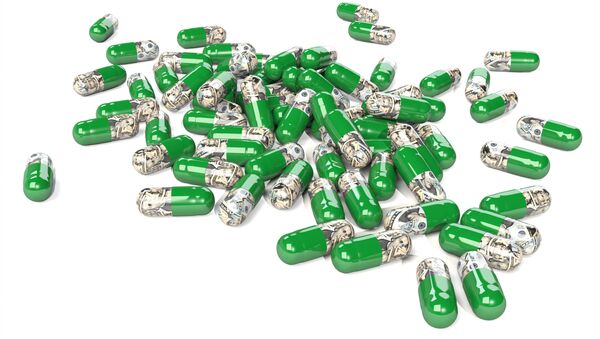Prescription drug spending last year broke records, pulling in $374 billion for pharmaceutical companies, up 13% from the year prior. It was the largest boost seen in the last decade, and the skyrocketing profits are due largely to medications that have just been put into use in the past two years.
As USA Today points out, new cancer drugs are regularly priced at over $100,000 a year — double the country’s average household income. A new cholesterol drug set to be approved this summer is expected to cost $10,000 a year.
Even when these costs are covered by private insurance, patients often have to pay a 20% co-pay to obtain them. When drugs are provided through government programs, the cost is underwritten by taxpayers.
One of the most shocking price tags is on a drug called Harvoni, used to treat hepatitis C, which affects millions of Americans. It was approved by the FDA in October 2014 and can cure someone in as little as 8 weeks.
But with many people suffering from hepatitis C living in poverty or prisons, the $1,125 a pill price point set by pharma giant Gilead is simply out of budget. Due to the cost, even government programs restrict access to the potentially life saving drug, offering it to only the sickest patients.
"If the drug had been priced more rationally, my expectation is that states would try to treat everyone they could get a hold of," Jeff Myers, president and chief executive officer of Medicaid Health Plans of America, told USA Today. "Imagine if Jonas Salk, when he invented the polio vaccine, had priced it like Gilead. We'd still have polio."
“Breakthrough” drugs like Harvoni are often fast tracked through the approval process, whereas generics are not. Comparably effective medicines often take years to become available at a lower price point, leaving a period where drug companies face no competition — meaning they can arbitrarily charge whatever they want, based on what the market will bear.




